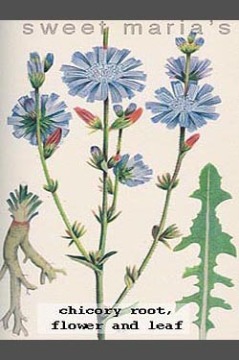Chicory
Being so plentiful, common even, chicory is often overlooked. Spotted along roadsides in Germany, it is known also as Wegwart, or “road plant.” It has many under appreciated attributes, here are a few:
The Flowers: With flowers the size of a silver dollar, chicory is most commonly appreciated as a colorful wildflower. At some stages sky blue, and at others pinkish, then white. The flowers were used as an unexpected yellow dye. A tea was often made from the flowers for medicinal purposes.
The Leaves: Chicory’s basal leaves have been eaten for thousands of years and still are. A Composite, part of a family of wild plants that are often used for salad greens. (Other members of the Composite family include endive, wild lettuces and the infamous dandelion.)
The Root: Especially useful, the root is in fact prized by the English and the French, who roast, grind, and flavor it with burnt sugar. This makes a coffee-like drink, or is added to coffee to enhance its flavor. Chicory was often used in place of coffee during both world wars. (Even Jubal Sackett, in the western by Louis L’amour, drank chicory!) Chicory has been called a contra-stimulant, correcting the effects of coffee. The young roots, which resemble carrots, can also be boiled and eaten as a root vegetable.
The Seeds: If the previously listed characteristics aren’t appealing enough for you, think of the appeal of the unsung chicory to the birds; goldfinches love chicory seeds!
Not in Ladies’ Gardens
Oh, not in Ladies’ gardens
My peasant posy!
Smile thy dear blue eyes,
Nor only– near to the skies–
In upland pastures dim and sweet–
But by the dusty road
Where tired feet
Toil to and fro,
Where flaunting Sin
May see thy heavenly hue
Or weary Sorrow look from thee
Toward a more tender hue.
–Margaret Deland (1857-1945)
We enjoyed reading “The Secrets of Wildflowers,” by Jack Sanders, in which we attained most of this information on chicory.



